We all know that Africa is abundant with wild animals. Lions, rhinos, hippos, and zebras roam the African plains. And there are millions of insects and birds found on the continent.
But, are there any bears in Africa?
Bears are remarkable species that are well-adapted to their environments. With non-retractable claws, an excellent sense of smell, and incredible size, it seems as though a bear could conquer many lands.
If so, why aren’t there any African bears?
An African lion or speedy cheetah would be no match for the bears. And surely they’d love the jungles of the Congo.
So what’s scaring them away? Let’s find out.
Do Bears Live in Africa?
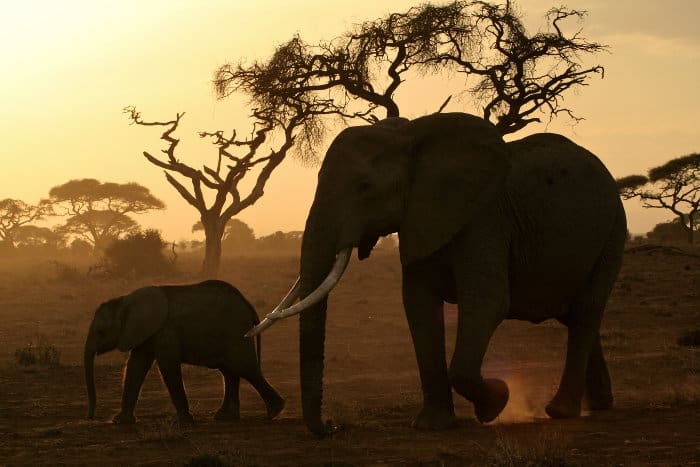
Africa is home to an abundance of animal species. In fact, travelers from around the globe largely travel to Africa with the hopes of seeing wildlife species in their natural habitats.
There are many animal species in Africa that you won’t find natively anywhere else on Earth.
Like the African elephant, which just so happens to be the largest land mammal in the world.
Cheetahs, wild dogs, lions, and hippopotamuses are also native African species.
In this sense, it may be fair to say that Africa has enough awesome animals. And that the rest of the world needs a chance to show off, too. Which may explain why some animals just aren’t found here.
Are there any bears in Africa?
At the moment, there are no bear species in Africa.
There was a time when the brown bear roamed the Atlas mountains, where they were once native. They’d made their way from Europe, all the way to the top of Africa.
Today, that’s no longer the case. The bear population has become extinct in Africa, alongside declining numbers in Europe.
Are there bears in South Africa?
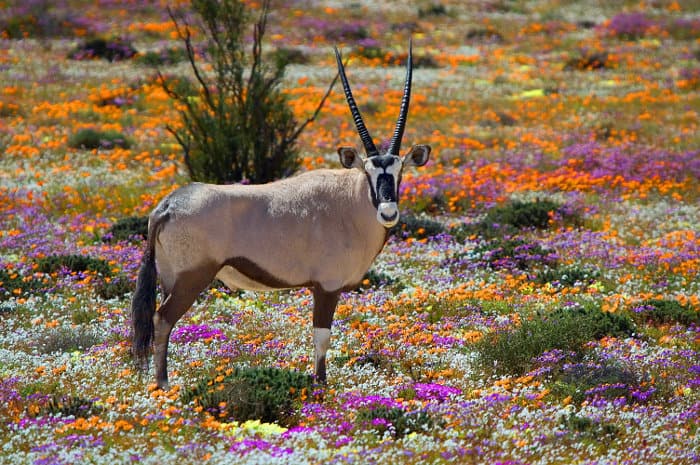
If you’ve always wanted to see a bear, don’t count on a trip to South Africa to reveal these animals. South Africa has an incredible range of animal species, but the bear isn’t one of them.
And while many people count on zoos to discover animals, South Africa has something better. Safari trips are the best way of seeing all the fantastic animals that call South Africa home. There just aren’t any bears there.
Are there bears in the Congo?
Anyone who has watched the classic Jungle Book, will know that bears are quite happy in the jungle. And the Congo jungle resembles the setting of Mowgli’s jungle in India.
Unfortunately, it’s not where bears like to spend their days. While a rainforest that harvests bamboo might usually attract pandas, bears haven’t quite found their way to the Congo.
Another factor to consider is the temperature of the rainforest in the Congo. Despite the rain, bears aren’t a fan of the warm weather. They’re just too fuzzy for a hot and humid climate.
It seems as though there’s only room for one ruler of that size in the Congo rainforest. The humble mountain gorilla.
The History of Bears in Africa – The Atlas Bears
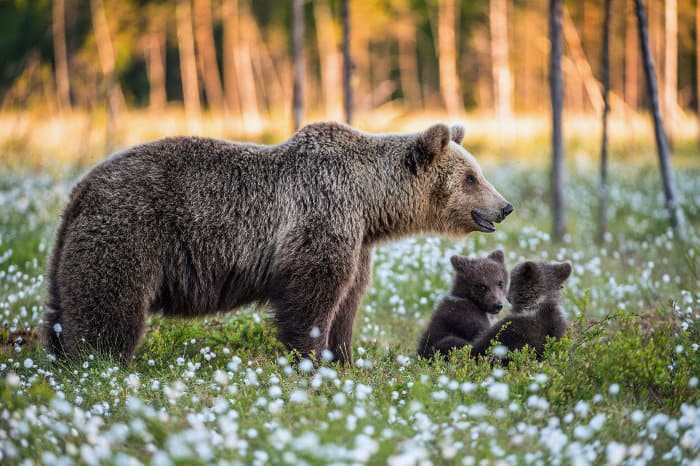
The Atlas bear was a subspecies of the brown bear. Up until the 19th century, these bears roamed the Northern parts of Africa.
In the past, you would have been able to catch a glimpse of a bear in Africa, wandering the Atlas mountains from Morocco to Libya.
The Roman Empire largely attributed to the decline of the Atlas bear. Although they were hunted as a sport, the Romans would capture the bears and use them in arenas. The gladiators would take their chances against lions, tigers, and bears.
Human activity, over-hunting, and the popularity of zoos were other contributions to the extinction of the Atlas bear.
African Bears – Did They Ever Exist?
In some parts of Africa, like the Sub-Saharan, Ethiopia and South Africa, scientists discovered fossilized bear bones. In Sub-Saharan Africa, South Africa, and Ethiopia.
These bear species existed millions of years ago, thus they are quite different from the bears we know today.
Agriotherium africanum weighed around 900 kilograms. That’s more than double the weight of the largest bears living today. Imagine a world today where bears weighing almost a ton roamed the plains of Africa.
Bear evolution shows that they were fierce fighters and had the biggest bite of all the bears that ever existed. The bears were able to prey on other large animals, given their sheer size. Bovines, horses, camelids, and rhinoceroses were a few.
Why are there no bears in Africa?
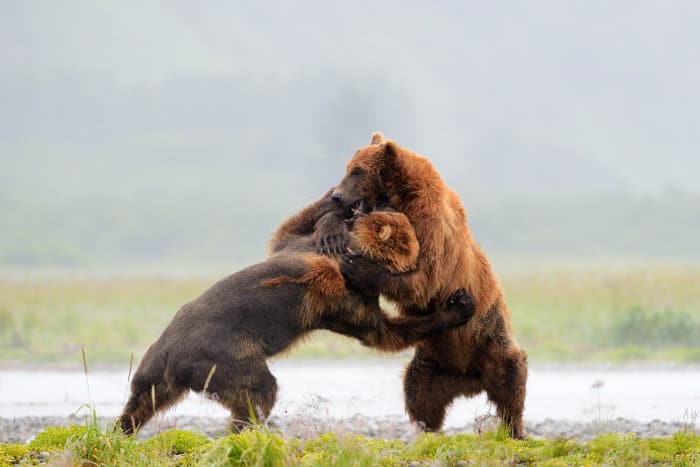
The Agriotherium africanum became extinct due to competition. Although they were powerful in size and able to put up a fight, life was (and often still is) tough in Africa.
And because they were mainly solitary beings, finding a mate and protection from threats was another challenge.
It’s also said that living in the Sahara desert was quite a challenge for these enormous bears. It meant that the bears didn’t have much choice for their habitats, as well as limited space for their evolution.
So, Where Are Bears Found?
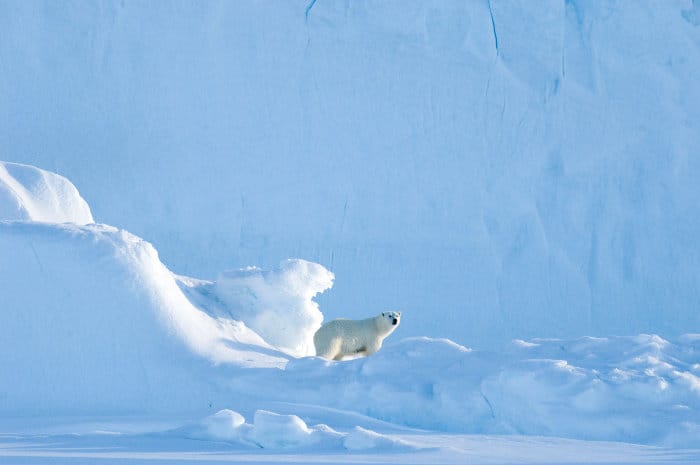
Although there are only 8 species of bears in the world, they live in completely different parts of the planet. Some may live in the forests, some in jungles or high up in the mountains.
The world’s bears live in up to 60 countries, mostly in the Northern parts. Concentrated bear species reside in North America, Europe, and Asia.
There is an exception to the rule, and that’s with the sun bear and spectacled bear. As the name suggests, the sun bear’s home is below the equator in Asia. While the spectacled bear lives in parts of South America.
The most widespread bear species is the brown bear. These species call the Western parts of Europe, all the way to Asia home. A large part of North America is also home to the brown bear, where it’s commonly known as a grizzly bear.
The common brown bear is the only bear species that is not classified as endangered by the IUCN.
Did you know that some bear species cover their tracks to avoid hunters?
They also have extremely good memories when it comes to remembering hotspots for food. They’ll remember where to find the tastiest foods, even if they haven’t been there in 10 years.
Bear species
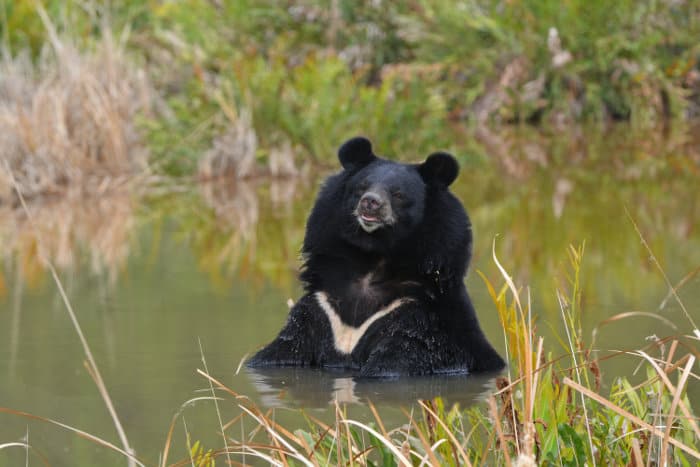
Below are 8 of the bear species, including the brown bear and other subspecies.
- American black bear
- Asiatic black bear
- Brown bear
- Giant panda bear
- Polar bear
- Spectacled bear/Andean bear
- Sloth bear
- Sun bear
Although all of these bears live in varied environments, they still share some common characteristics.
They’re all pretty stocky, have round heads with a long snout, short legs, and a warm layer of fur.
Some bear species, like the sun bear, can be as small as 1.2 meters, only weighing around 28 kg. That’s not much bigger than your family-friendly golden retriever.
While the largest of the bear species, the snowy polar bear, can reach 2.5 meters.
Due to their love of the colder climates, their thicker coats and hibernation patterns protect them from the harsher seasons.
Fun Facts About the Bear Species
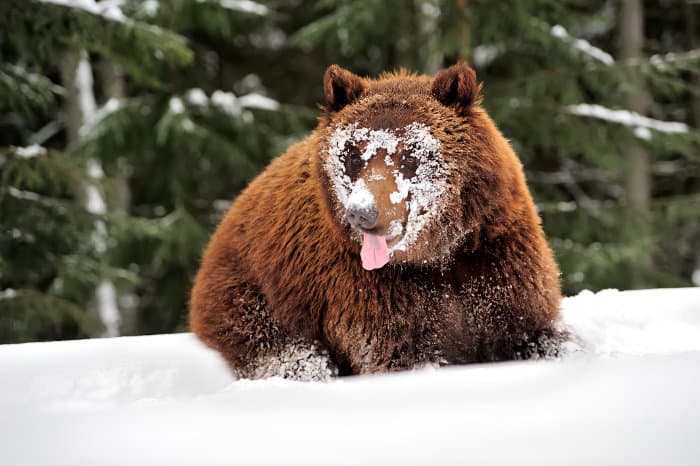
There’s always more we can learn about these cuddly creatures. Below are a few facts you may not have known about the bear species.
“Grolar bears” or “pizzlies” exist
In parts of Canada and Alaska, strange things have been occurring while nobody’s watching.
Male grizzlies have started roaming into female polar bear territories with the hopes of cozying up during the cold.
The two species mate, producing a hybrid “grolar bear”, with lighter fur and a larger head.
Bears can walk on two legs and even climb trees
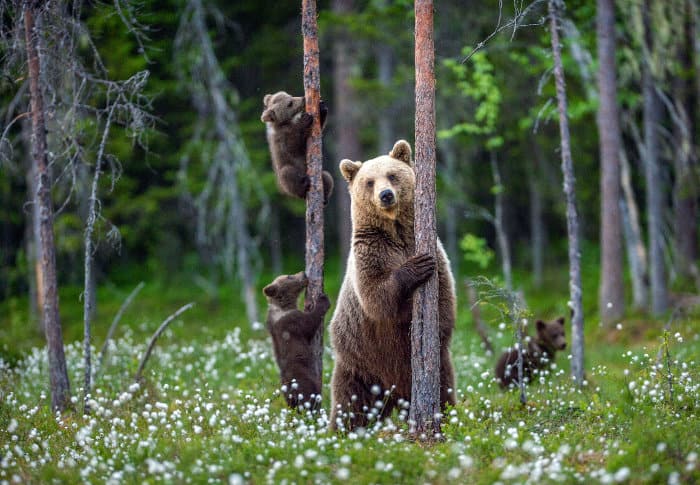
Surprisingly, bears are strong enough to carry their massive weight on their hind legs and take short strides. It’s why the native Americans call the bear “the beasts that walk like man”.
They’ll often stand on their hind legs to get a better scent and look around them.
And despite myths, bears are also relatively good climbers. Although climbing isn’t necessary, they might just find a nice hive and climb up the tree if they’re really hungry.
Bears can outrun Usain Bolt
Bears can run more than 60 km/hour, and they can do this running up or downhills.
And while Usain bolt can outrun a lot of animals, the bear isn’t one of them.
His 44 km/hour spirit just won’t cut it with a bear.
Bears really do love honey
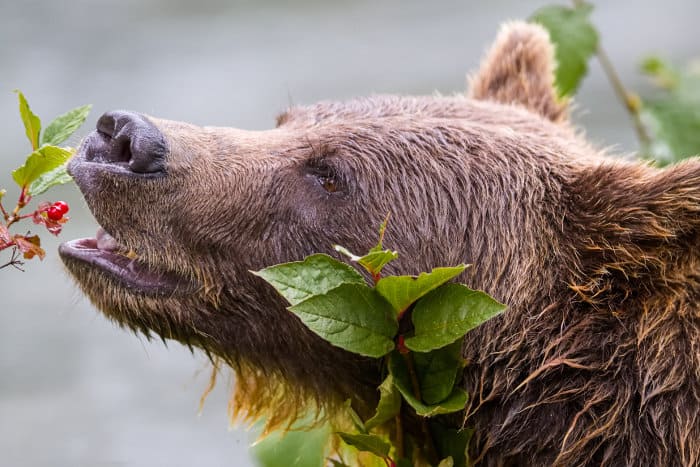
Bears love honey and they’ll eat the whole hive if given the chance.
Unlike Winnie the Pooh, who gets his honey delivered in pots, bears only get lucky once in a while in finding beehives.
Hives aren’t necessarily easy to find in places like Alaska, so they’ll have to try their luck elsewhere.
Thanks for Bearing Through the Bear Talk
Bears are extraordinary creatures and at times quite shy. They adore their honey, fishing trips in the cold waters, and the chance to sleep for 4 months of the year.
Who wouldn’t want the chance to spot a giant grizzly bear, see a giant panda, or spy upon a fluffy polar bear? Unfortunately, you won’t have the chance in Africa.
However, there are plenty of fantastic places around the globe where you’ll have an opportunity to see these beauties. Have your pick and discover these creatures in their natural habitats!
There may not be bears in Africa, but there’s a host of other interesting wildlife. Plan and book a fantastic safari in Africa here!
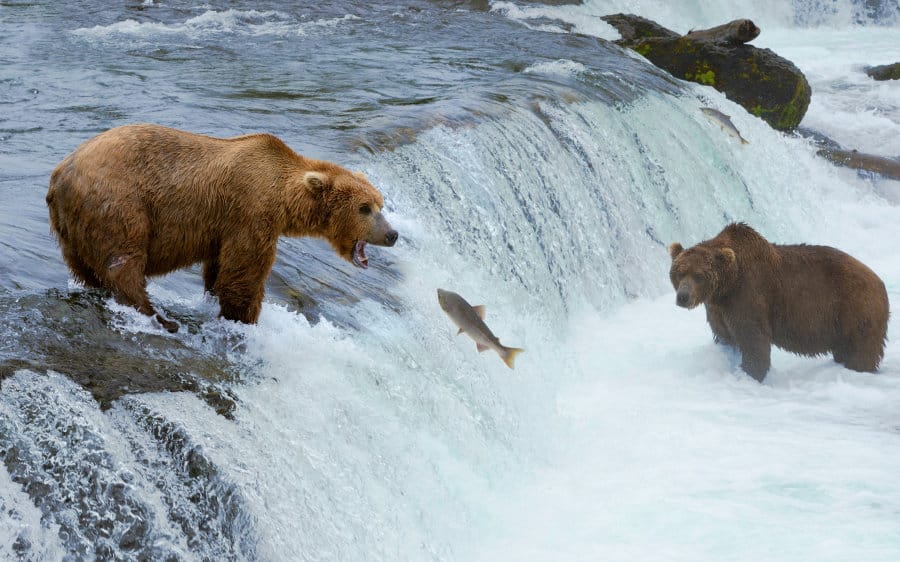
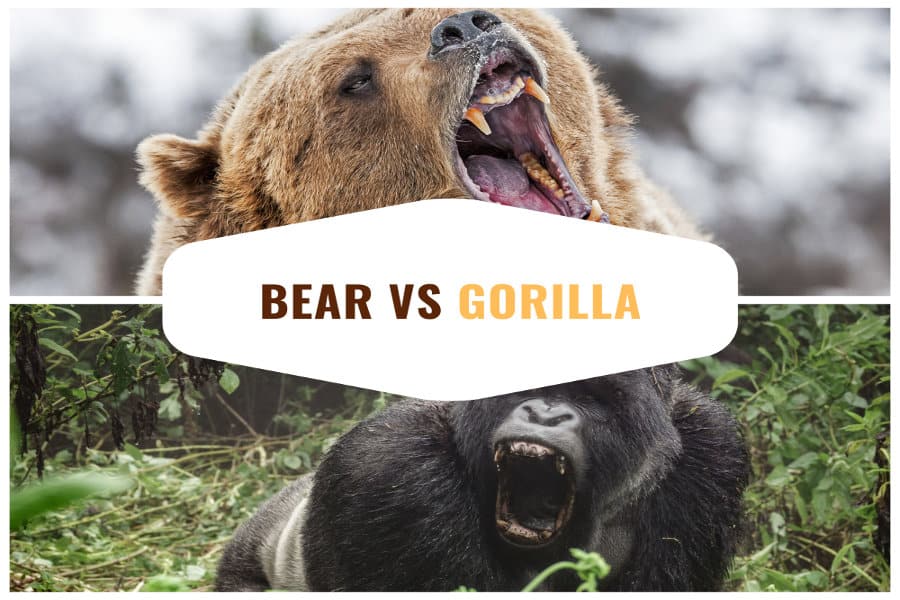
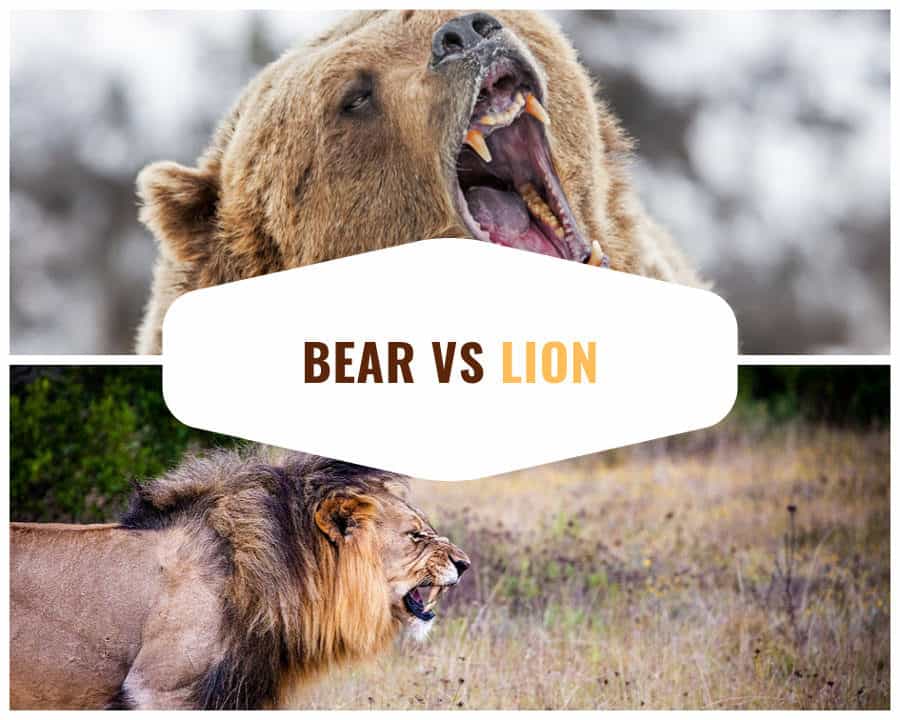
The blue whale is the largest mammal … :/
Hi Jimbo,
Thanks for pointing that out. Indeed, the Antarctic blue whale is the largest living mammal on the entire planet. It weighs up to 181 000 kg (400 000 pounds), which corresponds to the overall weight of 30+ elephants.
The sentence was meant to say that the African elephant is the largest “land” mammal in the world.
Cheers!